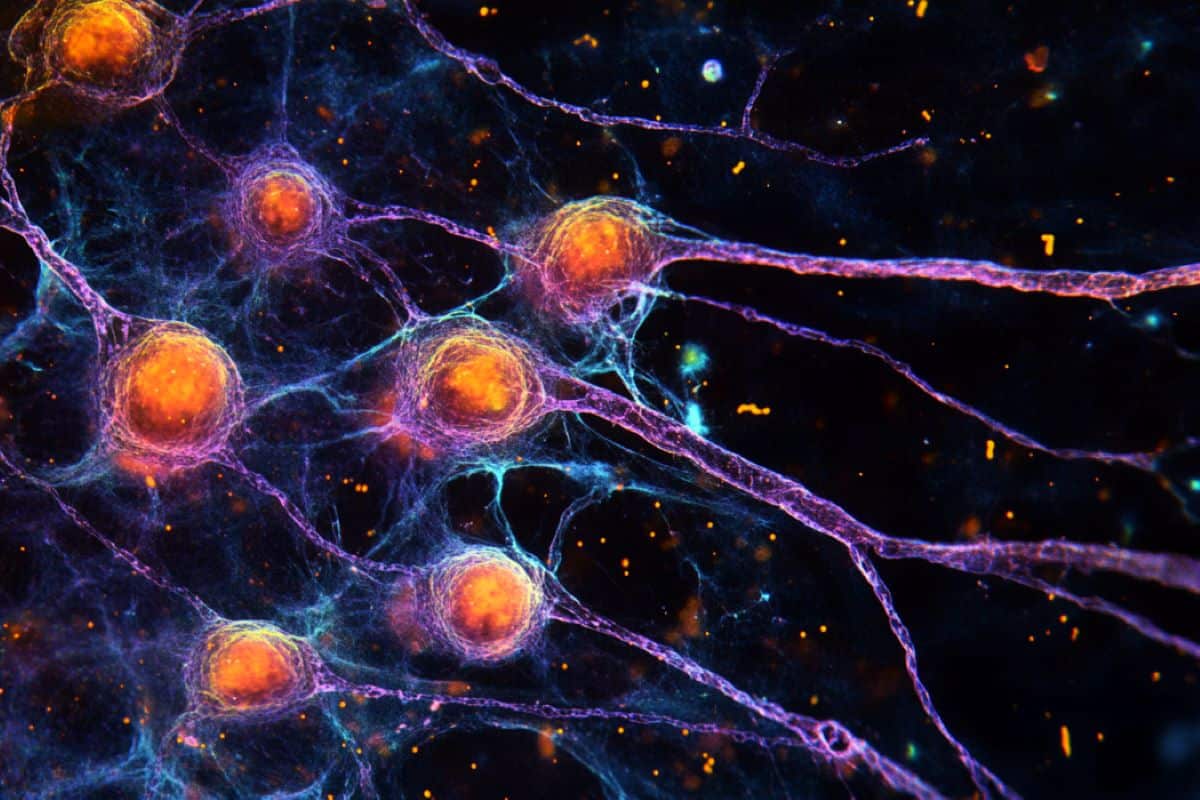Summary: New research shows that glial cells, and oligodendrocytes in particular, produce amyloid-beta, a protein linked to Alzheimer’s disease, challenging the long-held belief that neurons alone are responsible for the development of the disease.
This discovery opens up new possibilities for therapies aimed at preventing plaque formation in the brain. Targeting neurons and glial cells could slow the progression of the disease by inhibiting the production of amyloid-beta before plaques form.
Key data
- Not only neurons but also glial cells produce the amyloid-beta involved in Alzheimer’s disease.
- By blocking amyloid production in glial cells, the number of brain plaques was reduced by 30%.
- This finding could lead to earlier and more effective Alzheimer’s therapies.
Source: Max Planck Institute
Memory loss, confusion, speech problems – Alzheimer’s disease is the most common cause of dementia and affects around 35 million people worldwide, and the number is rising.
A central role in the disease is played by the protein amyloid-beta, which occurs naturally in the brain: in patients, it accumulates in insoluble clumps that form plaques between the nerve cells in the brain and damage them.

Researchers at the Max Planck Institute (MPI) for Multidisciplinary Sciences have now shown that in addition to nerve cells, special glial cells in the brain also produce amyloid beta. This finding could open up new approaches for future therapies.
There is no cure for Alzheimer’s disease. However, there are therapeutic approaches to reduce the amyloid plaques in the brain. This can slow the progression of the disease, but cannot reverse or stop it.
“Until now, it was assumed that neurons are the main producers of amyloid-beta and therefore the main target of new drugs,” explains Klaus-Armin Nave, Director at the MPI for Multidisciplinary Sciences.
Results from his neurogenetics department have now shown that, in addition to neurons, special glial cells – so-called oligodendrocytes – play an important role in plaque formation.
“One of the functions of oligodendrocytes is to form myelin – an insulating layer – and wrap it around nerve fibers to speed up signal transmission,” explains Andrew Octavian Sasmita, one of the first authors of the study now published in Natural Neuroscience and former PhD student in Nave’s team.
In an earlier study, the Göttingen researchers had already discovered that defective myelin in oligodendrocytes worsens Alzheimer’s disease. Do glial cells play an even greater role in the disease than previously thought?
“We have now shown that although neurons are the main producers of amyloid-beta, oligodendrocytes also produce a significant amount of the protein that is incorporated into plaques,” says Sasmita.
A research group led by Marc Aurel Busche from University College London (England) recently came to similar conclusions.
Prevention of plaque formation
The cells of the nervous system produce amyloid-beta by splitting a larger precursor molecule with the help of an enzyme called BACE1. For their experiments, the researchers specifically switched off BACE1 in the neurons and oligodendrocytes of mice.
They then used 3D light sheet microscopy to examine plaque formation throughout the brain, providing a complete picture of amyloid plaques in all brain regions.
“Oligodendrocytes without BACE1 developed about 30 percent fewer plaques. Turning off the BACE1 gene in neurons reduced plaque formation by over 95 percent,” says Constanze Depp, also lead author of the study and a former doctoral student in Nave’s department.
The scientists also found: “Plaque deposits only form when a certain amount of neuronal amyloid beta is present. The oligodendrocytes then contribute to these plaques.”
This threshold could be useful for Alzheimer’s therapy.
“If we succeed in inhibiting BACE1 before this threshold is reached, the plaques could form later,” emphasizes Nave.
This could help slow the progression of Alzheimer’s disease in its early stages.
About this research news on Alzheimer’s disease
Author: Celina Boeker
Source: Max Planck Institute
Contact: Celina Böker – Max Planck Institute
Picture: The image is from Neuroscience News.
Original research: Open access.
“Oligodendrocytes produce amyloid-β and, along with neurons, contribute to plaque formation in Alzheimer model mice” by Klaus-Armin Nave et al. Natural Neuroscience
Abstract
Oligodendrocytes produce amyloid-β and, along with neurons, contribute to plaque formation in Alzheimer’s model mice
Amyloid-β (Aβ) in Alzheimer’s disease (AD) is thought to be of neuronal origin. However, transcripts of the amyloid precursor protein (APP) and amyloidogenic enzymes are equally abundant in oligodendrocytes (OLs).
By cell type-specific deletion of Bace1 in a humanized knock-in AD model, APPNLGFwe show that OLs and neurons contribute to Aβ plaque burden. For rapid plaque formation, excitatory projection neurons must provide a threshold level of Aβ.
Ultimately, our findings are relevant for AD prevention and therapeutic strategies.



